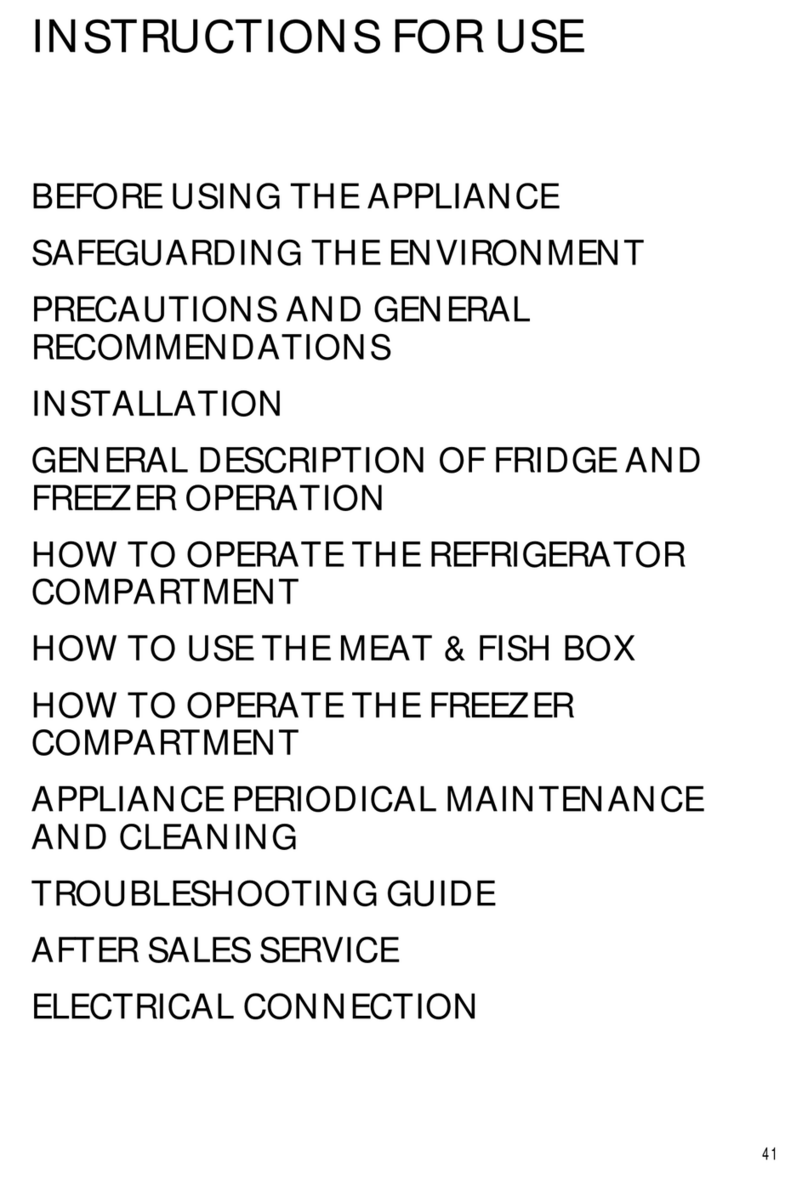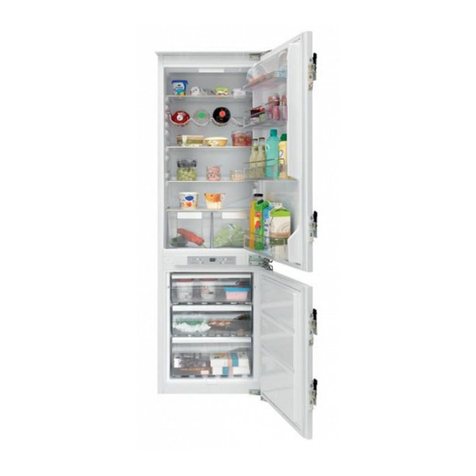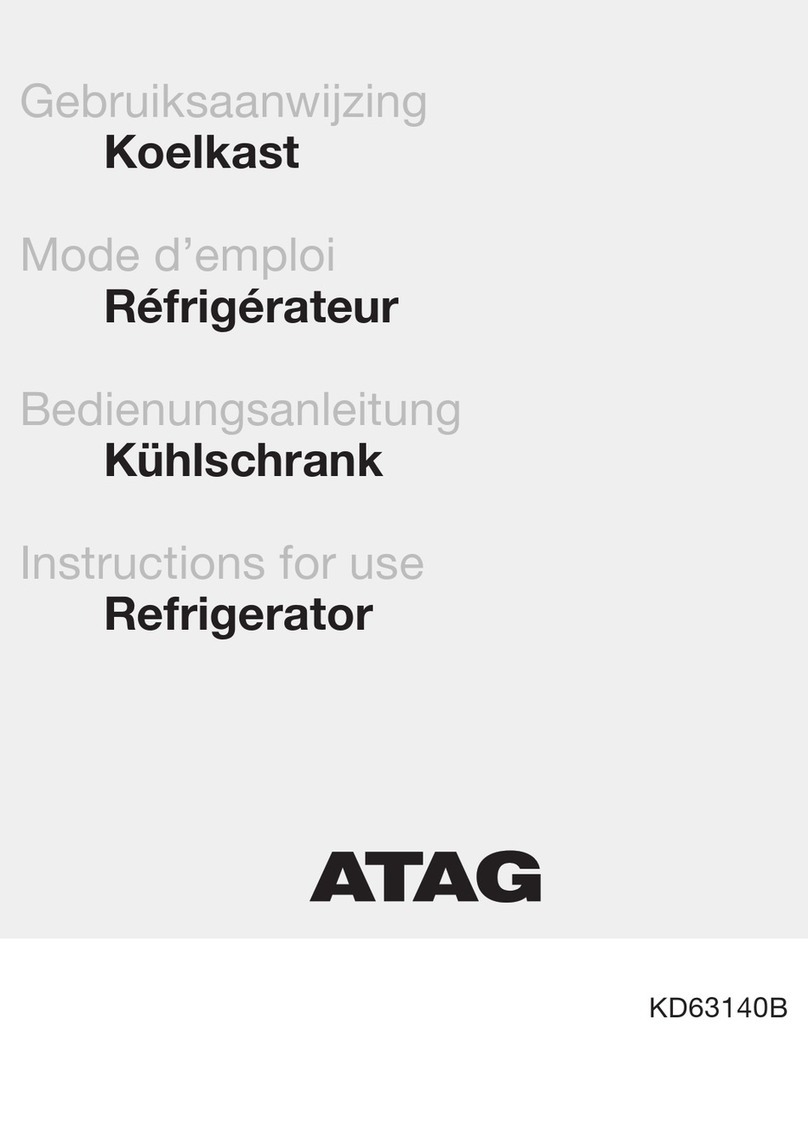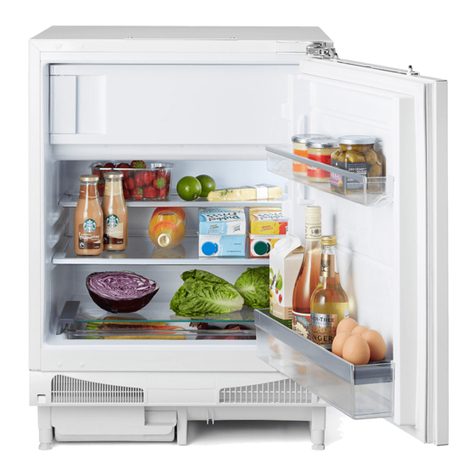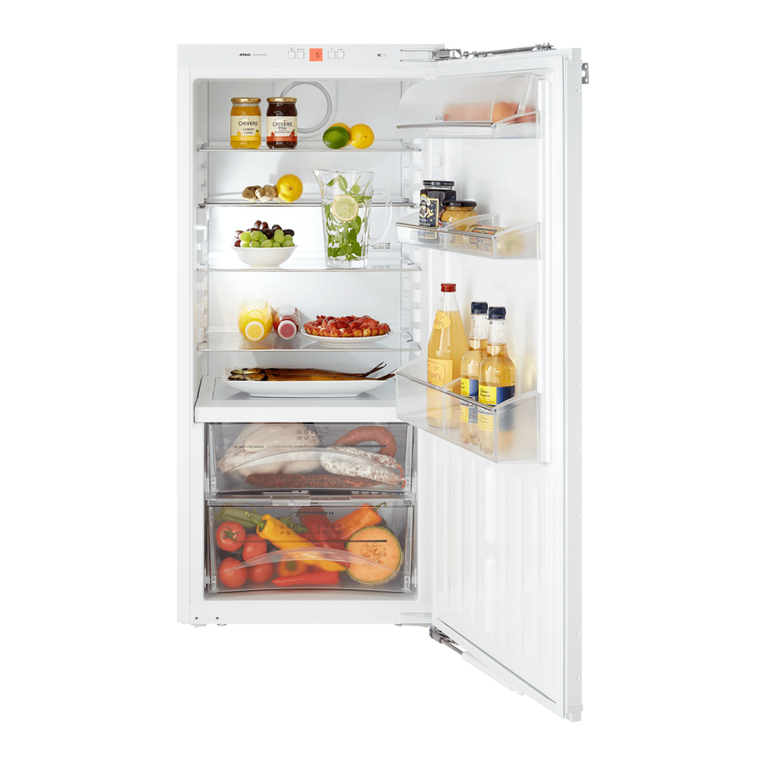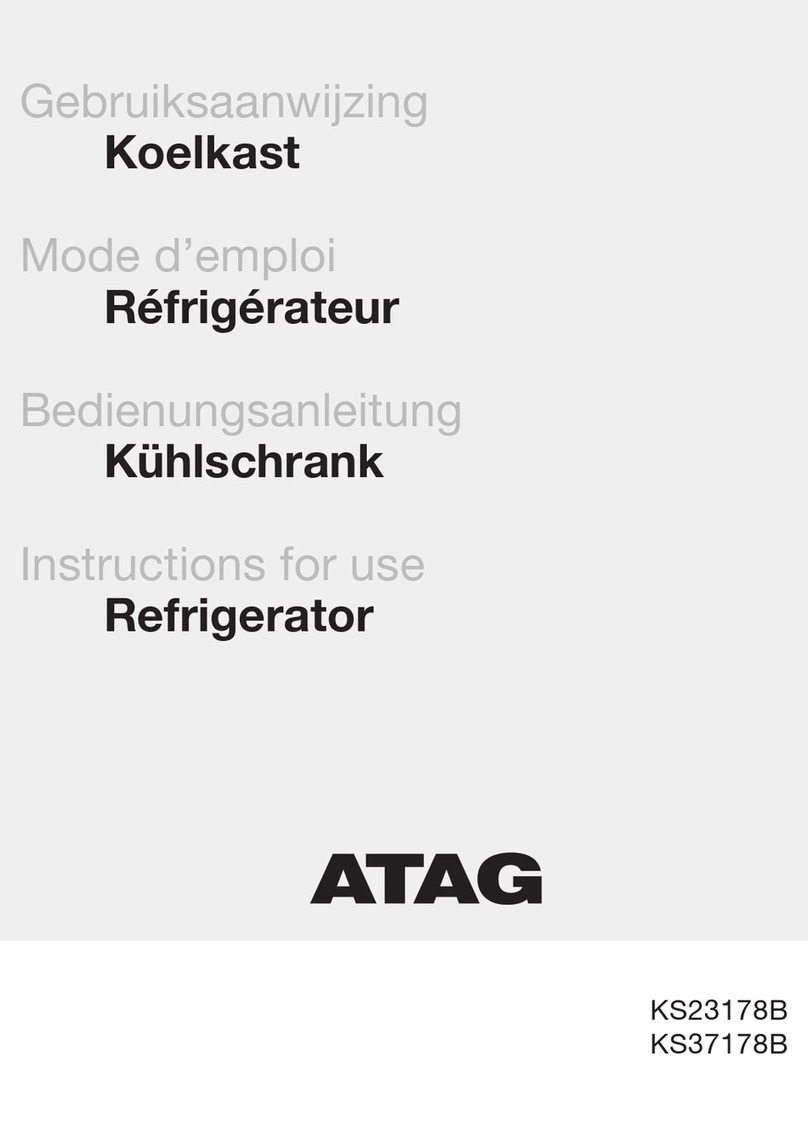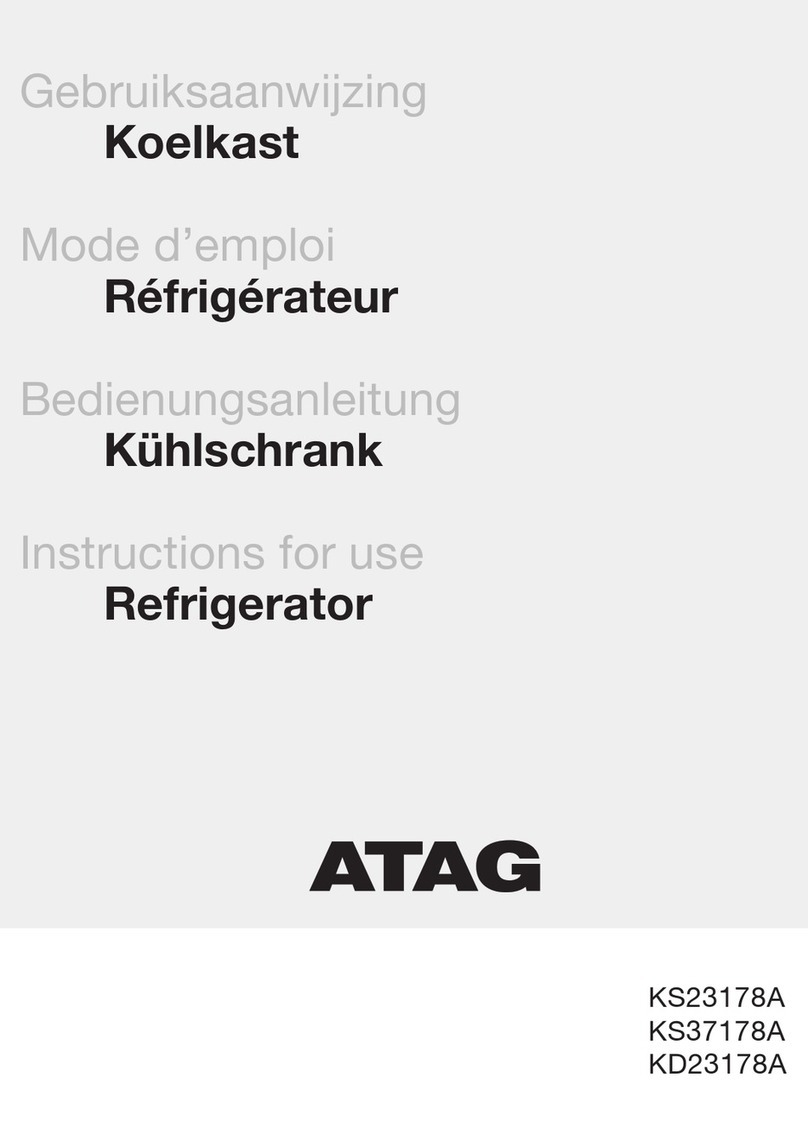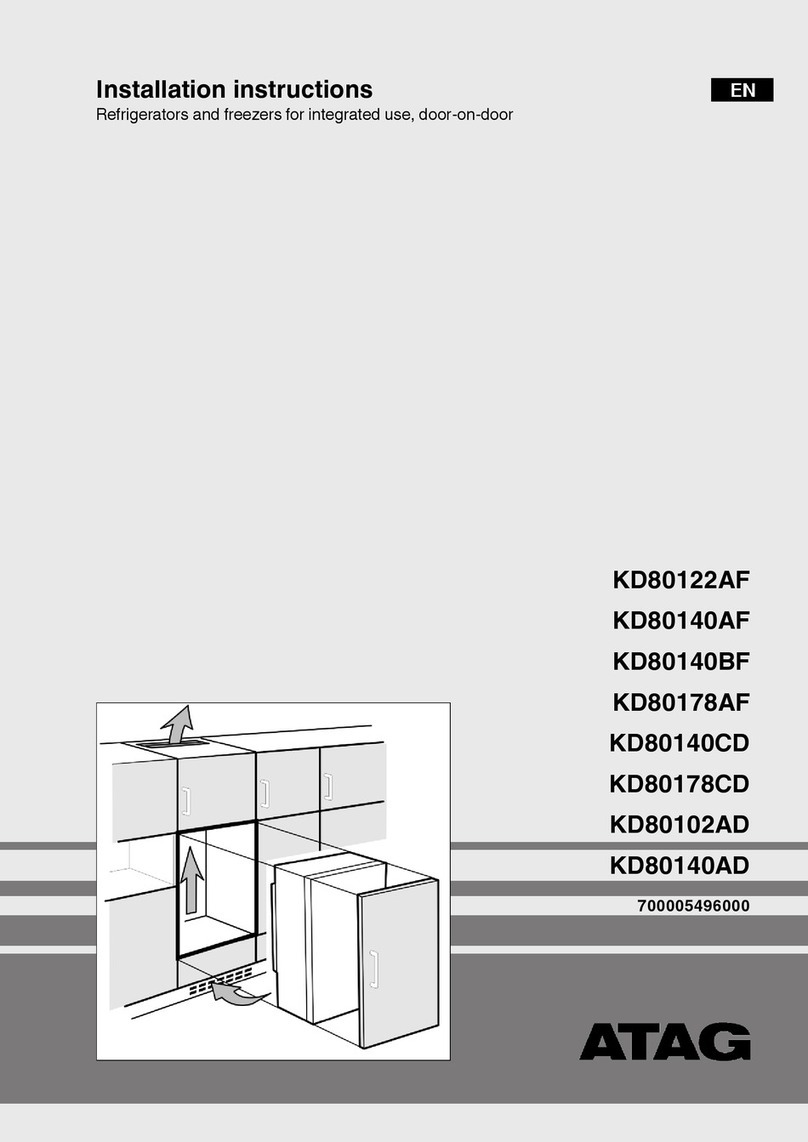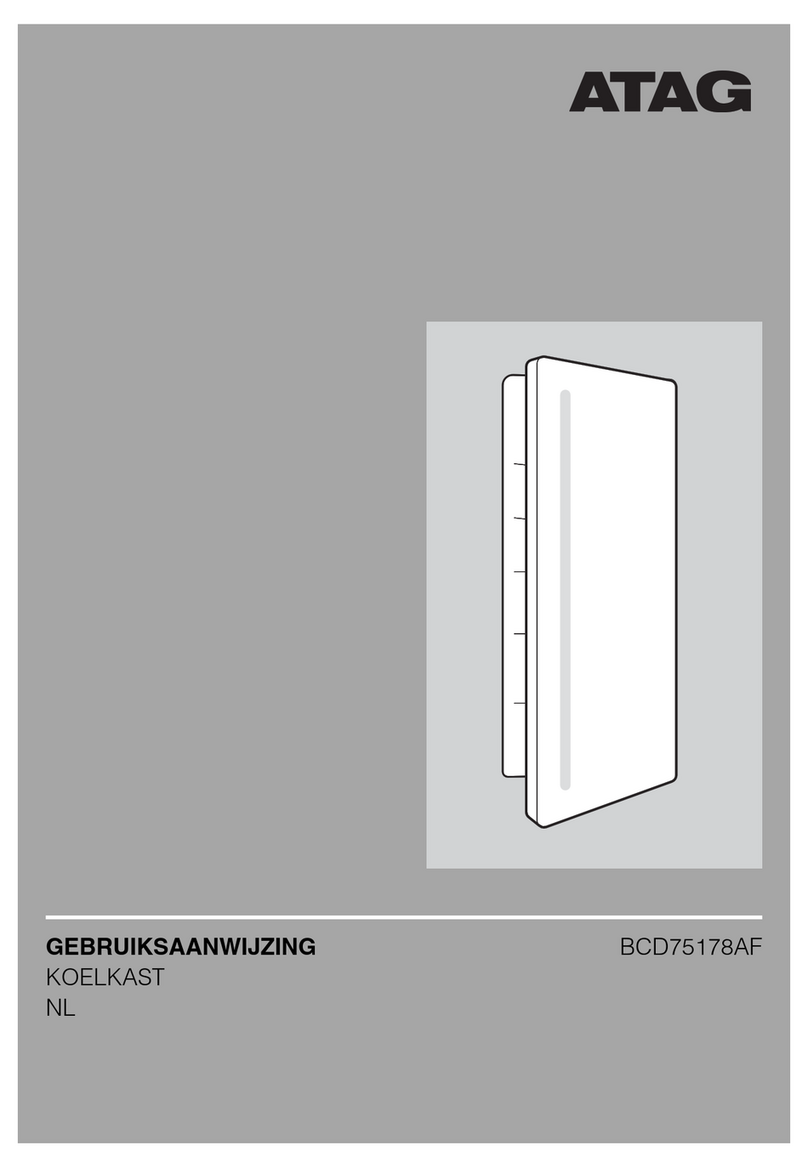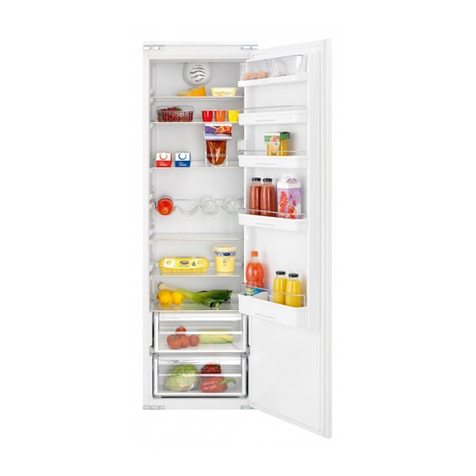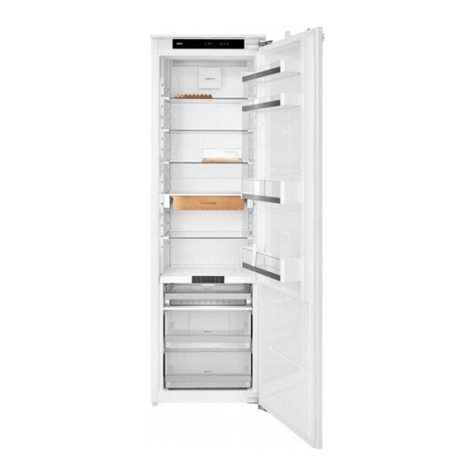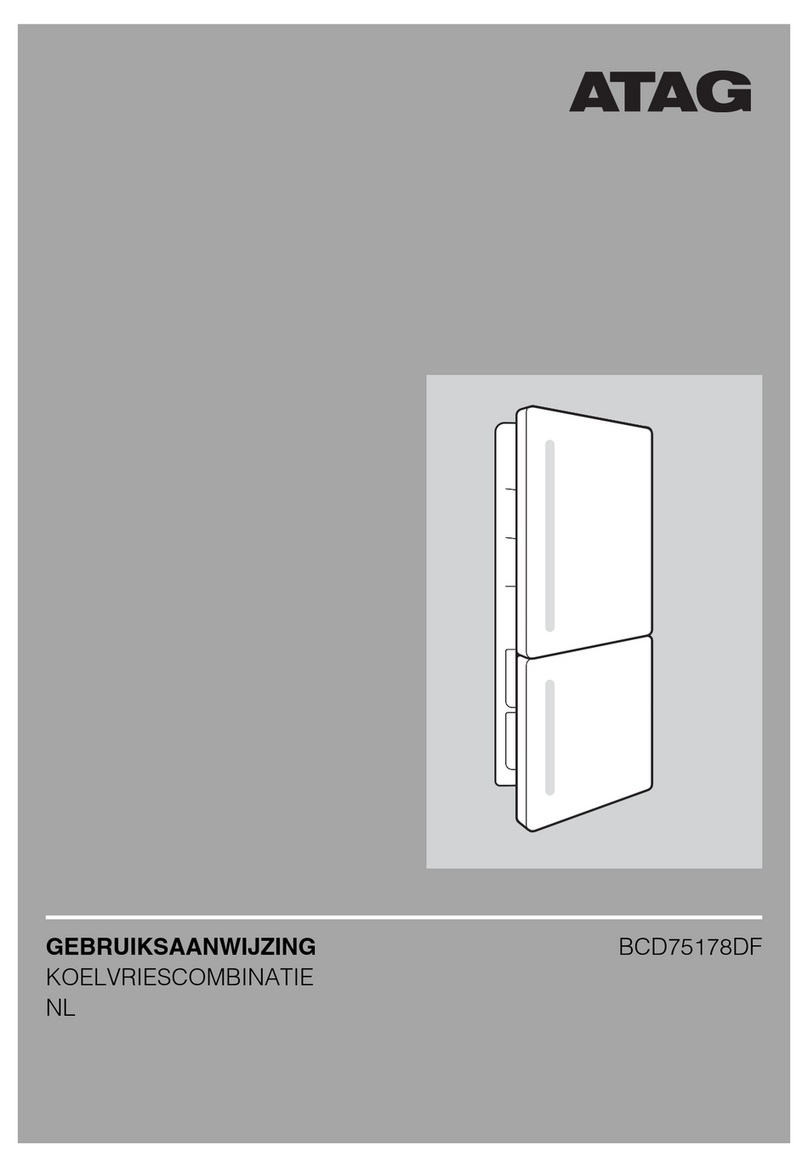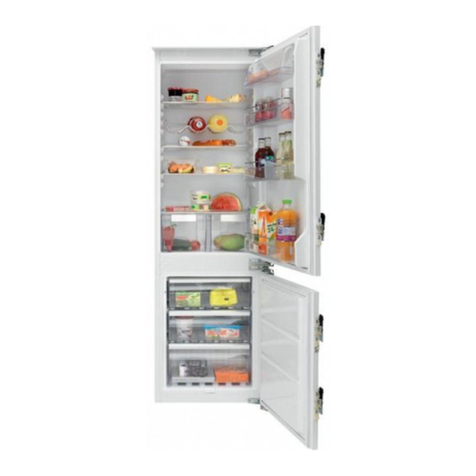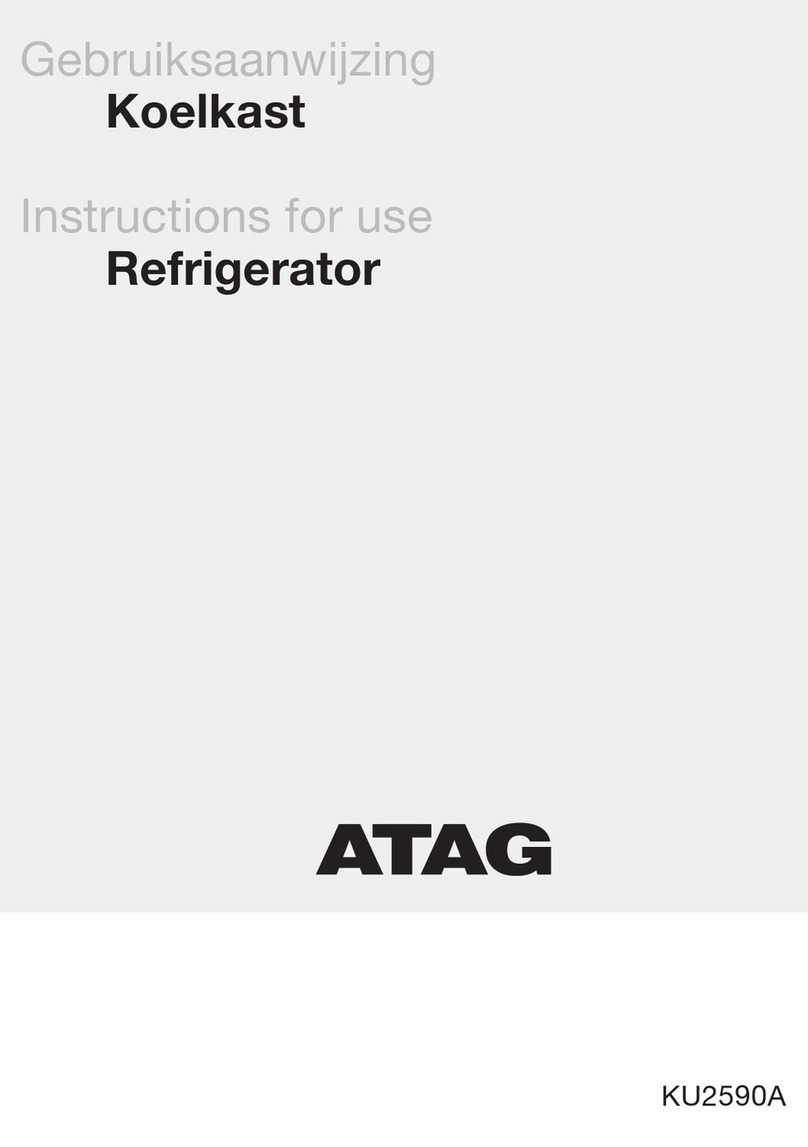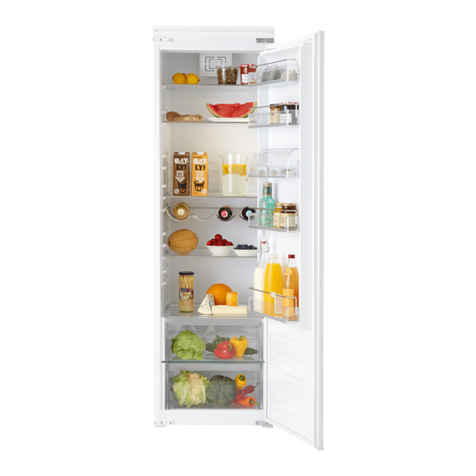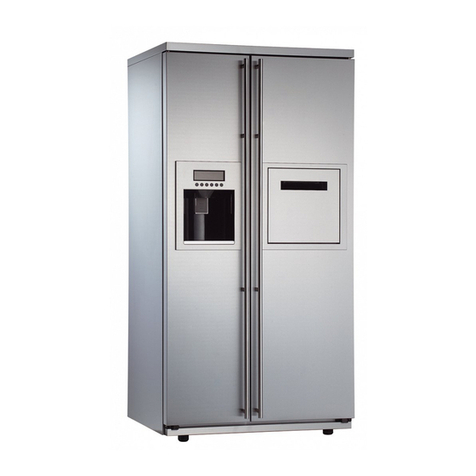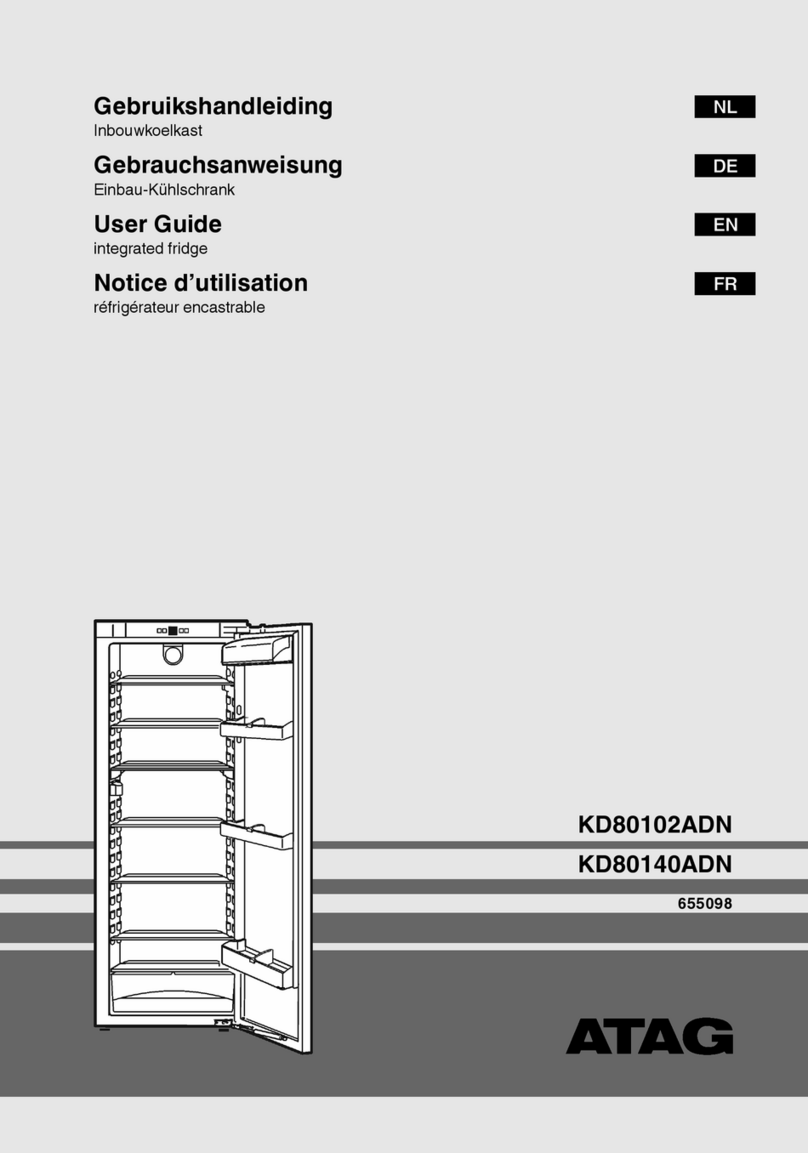
20
“ZERO DEGREES” COMPARTMENT
(depending on the model)
The “Zero Degrees” compartment is specifically designed
to maintain a low temperature and the correct humidity to
preserve fresh food for longer (for example, meat, fish, fruits
and winter vegetables).
Humidity control technology coupled with Activ0° provides
the best food preservation when the food is not completely
packed.
Turning on and turning off the compartment
The internal temperature of the compartment is approximately 0° when the compartment is turned
on.
To turn on the compartment, press the
button shown in the figure for more than
one second until the symbol lights up.
The lit symbol means that the compartment
is working. Press the button again for more
than one second to turn off the compartment.
To turn off the compartment completely, you
must remove the drawer.
For the correct functioning of the “Zero Degrees” compartment, it is necessary that:
- the refrigerator compartment is turned on
- the temperature is between +2°C and +6°C
- the drawer in the “Zero Degrees" compartment must be inserted for it to be turned on
- one of the following special functions is not selected: Stand-by, Cooling-Off, Vacation (if present),
in this case, remove the food contained in it.
Note:
- if the symbol does not light up when you turn on the compartment, check that the drawer is
properly inserted; if the problem persists contact the authorised Technical Assistance Service.
- if the compartment is turned on and the drawer is open, the symbol in the control panel may
automatically turn off. The symbol will light up again when the drawer is inserted
- regardless of the state of the compartment, you may hear a faint noise, which you should
consider as normal
- when the compartment is not in operation, the temperature inside it depends on the general
temperature of the refrigerator compartment. In this case, it is advised that fruits and vegetables
that are not sensitive to cold (berries, apples, apricots, carrots, spinach, lettuce, etc.) are stored
in it.
Important: if the compartment is turned on and food with a high water content is present,
condensation may form on the shelves. In this case, turn the function off temporarily.
Be careful when positioning food and containers that are small in size on the upper shelf of the
“Zero Degrees” compartment in order to prevent them accidentally falling between the shelf and
the back wall of the refrigerator compartment.

